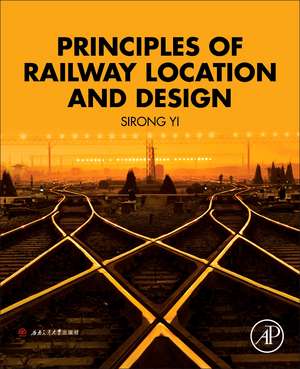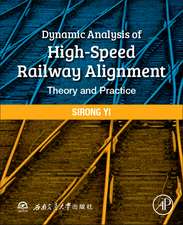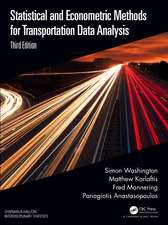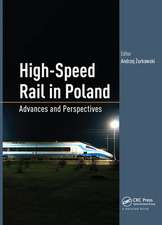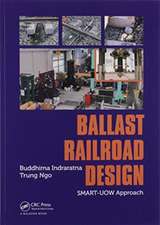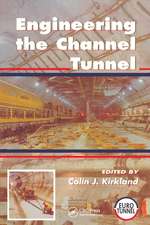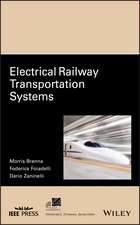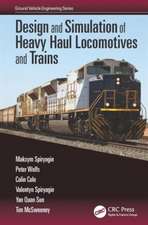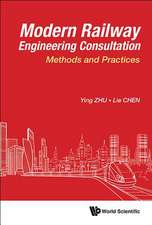Principles of Railway Location and Design
Autor Sirong Yien Limba Engleză Paperback – 16 oct 2017
The book covers ten areas of unfavorable geological conditions including slide areas, debris flow areas and earthquake areas. Practical solutions with detailed presentations have been provided. This valuable reference book summarizes and extracts the high speed railway route selection design. The book covers basic principles and methods by referring to research data of high speed railway technology in China and other countries, as well as engineering practice data.
- Provides classification and classing methods of railway networks, integrated with principles and methods of railway route selection and design
- Describes enhancing methods for existing railways, and an implementation plan for existing passenger railways, new high speed railways and heavy haul railways
- Presents route selection principles and methods for regions with bad geological conditions, including landslide, debris flow and earthquake
Preț: 834.92 lei
Preț vechi: 1091.29 lei
-23% Nou
159.76€ • 167.25$ • 132.19£
Carte tipărită la comandă
Livrare economică 31 martie-14 aprilie
Specificații
ISBN-10: 0128134879
Pagini: 646
Dimensiuni: 191 x 235 x 37 mm
Greutate: 1.32 kg
Editura: ELSEVIER SCIENCE
Public țintă
scientific researchers, engineering technicians and managerial staff engaged in railway engineering, and graduated students and doctoral candidates majoring in railway engineering and rail transit engineering.Cuprins
1. Introduction
2. Railway Transport Capacity and Construction Standards
3. Traction Calculation of Train Work
4. Railway Plane and Profile
5. Railway Location
6. Technical and Economic Comparison of Schemes
7. Railway Station Design
8. Enhancement of Railway Transport Capacity
9. Design of Existing Railway Reformation and double line construction
Descriere
Principles of Railway Location and Design examines classification and classing methods of railway networks and expresses theories and methods of railway route selection and design. Railway networks represent modal transfer, which significantly alleviates traffic congestion and pollution The book introduces capacity enhancing methods for existing railways and implementation plans and technical conditions for improving existing passenger railways, building new high speed railways and developing heavy haul railways.
The book covers ten areas of unfavorable geological conditions including slide areas, debris flow areas and earthquake areas. Practical solutions with detailed presentations have been provided. This valuable reference book summarizes and extracts the high speed railway route selection design. The book covers basic principles and methods by referring to research data of high speed railway technology in China and other countries, as well as engineering practice data.
- Provides classification and classing methods of railway networks, integrated with principles and methods of railway route selection and design
- Describes enhancing methods for existing railways, and an implementation plan for existing passenger railways, new high speed railways and heavy haul railways
- Presents route selection principles and methods for regions with bad geological conditions, including landslide, debris flow and earthquake
